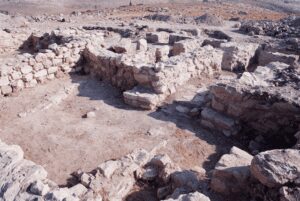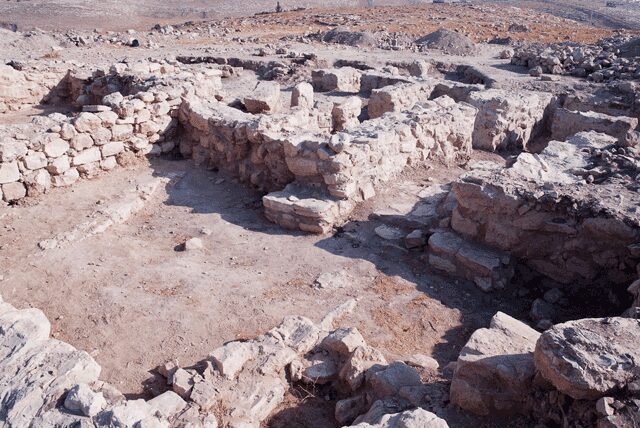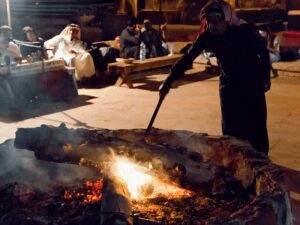
Hirbet Atarus, nestled in the heart of central Jordan, emerges as a remarkable vestige of the Iron Age. Located 14km northwest of Dhiban and 4km east of the formidable Machaerus fortress, this ancient site beckons archaeologists and history enthusiasts alike.
The temple, a cornerstone of this historical site, now stands as a testament to the enigmatic past. Comprising three parallel rooms that collectively span an impressive 353 square meters, the temple’s design is unparalleled in the region. Professor Emerita Michele Daviau, an esteemed Canadian archaeologist from Wilfrid Laurier University’s Department of Archaeology and Classical Studies, expressed her astonishment at this architectural marvel.
Daviau’s research has delved into the depths of Hirbet Atarus, uncovering intriguing secrets within its walls. Of particular interest is a singular rectangular chamber, housing a standing stone ensconced in one corner, accompanied by a meticulously constructed stone platform. This discovery has piqued the curiosity of researchers and historians, offering glimpses into the rituals and practices of times long gone.
Long before the excavations commenced, the surface of the site yielded a fascinating relic—a ceramic figurine torso. This artifact, bearing semblance to a male figure with arms poised at his sides, evokes questions about its significance and purpose. Daviau’s insights reveal that several of these objects have found their place within the Madaba Museum, standing as poignant examples of cultic paraphernalia.
Noteworthy among the artifacts discovered is a square architectural model, capturing a scene of two male figures transporting animals. A fragment of the roof reveals a partially preserved depiction of a female figure. Such intricate representations further highlight the spiritual and symbolic aspects intertwined with this ancient place.
The treasure trove of finds extends to a ceramic bull statuette of considerable size, an elegantly designed lamp boasting a tall pedestal base, and a kernos ring believed to hold magical properties. Among these remarkable objects, a deep bowl adorned with animal reliefs, a cup-and-saucer vessel, and a limestone platter etched with a delicate lotus blossom design capture the essence of an era lost to the annals of time.
The presence of the grand bull statuette sheds light on a distinct tradition that diverges from the practices observed in the nearby Hirbet Al Mudayna. Daviau’s astute observations indicate that while scattered religious artifacts have been unearthed in various parts of Jordan, tangible evidence of temple structures remains elusive.
Venturing beyond the boundaries of Hirbet Atarus, the archaeological landscape of Jordan reveals fascinating insights. A site situated in Dhiban, approximately 70 kilometers south of Amman, hints at a similar narrative. Though it too has been tentatively recognized as a temple, its vast dimensions and room layout lend credence to the possibility that it once served as an administrative hub—a testament to the multifaceted nature of ancient architectural marvels.
As the sands of time continue to yield their secrets, Hirbet Atarus stands as a silent witness to a bygone era. Through the dedication and diligence of researchers like Professor Daviau, the legacy of this site and its intriguing artifacts continues to captivate our imagination, reminding us of the rich tapestry of human history woven across the ages.
You may also like
No related posts.





